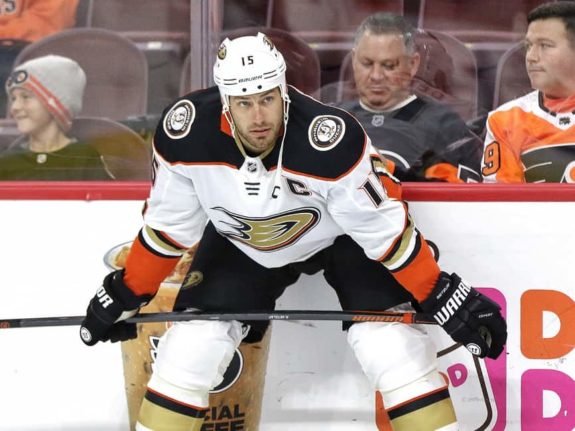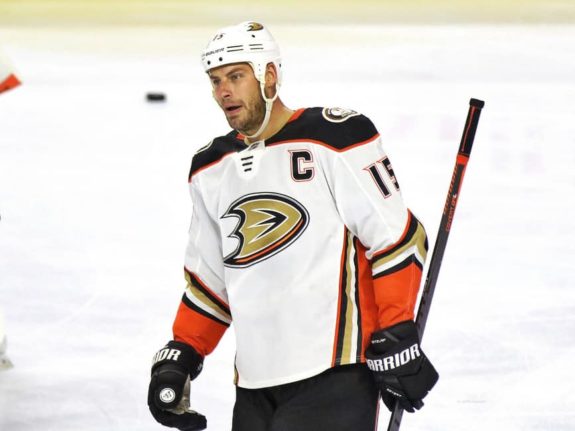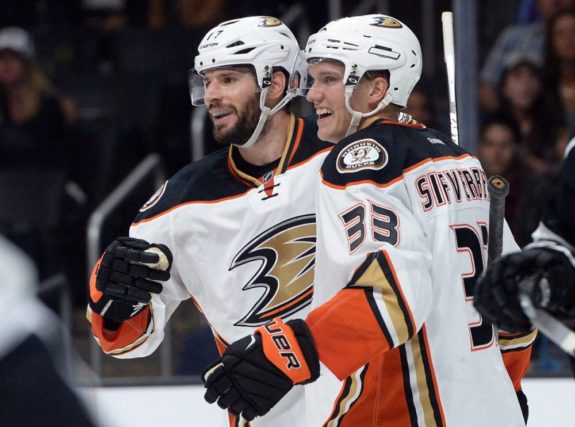![]()
Ben Street with Ryan Getzlaf and Pontus Aberg was the Anaheim Ducks starting line against the Buffalo Sabres last Sunday. If you’re confused, you’re not alone. Getzlaf’s normal linemate, Rickard Rakell, was healthy and on a line with Sam Steel and Isac Lundestrom. Rookies Max Comtois and Kiefer Sherwood have been playing well and could have done well with Getzlaf. So why play Getzlaf with Street, who has been doing well patrolling the fourth line, and Aberg, who had only recently been called up from San Diego?
This kind of confusion isn’t abnormal this season. It’s rare that head coach Randy Carlyle puts together two lines exactly the same two games in a row, and the issues it’s causing are evident.

Ducks Lack of Chemistry
It’s no secret that goaltender John Gibson has been covering up for much of the Ducks defensive liabilities. They generate the least amount of shots per game (23.9 S/GP) while giving up the most amount of shots per game (37.9 SA/GP). These stats show that the Ducks are having trouble getting out of the defensive zone.
The Ducks need more clean breakouts. As Getzlaf told the OC Register recently after a loss to the Dallas Stars, “We’re not moving the puck effectively, we’re not making passes and, in turn, we play in our zone the whole time. If you don’t execute your first or second pass out of the zone, you spend the whole time in your zone. We’re chasing it around with one hand on our sticks, poking at it. We slap it around and never get a hold of the thing, so you spend the whole night chasing it.” (from ‘Ducks suffer another second-period breakdown in Dallas, fall to Stars’, OC Register – 10/25/18)

That becomes an issue with the line blender Carlyle is enacting when choosing his lineup for the night. If you don’t play with your teammates very often, you don’t gain an understanding of how they play and where they will be coming from. Without that understanding it becomes difficult to find your linemates, leading to a lot of turnovers. As a team, the Ducks have a minus-17 turnover differential, meaning they’ve given the puck away 17 more times than they’ve taken it from their opponents.
The Ducks lack chemistry. They’re finding it difficult to find each other on the ice, and it’s hurting their chances at winning games night in and night out. Consistent linemates would go a long way in building this chemistry.
Ducks Injuries Taking Their Toll
It’s understandable why Carlyle is having trouble building these lines. Corey Perry, Patrick Eaves, Jakob Silfverberg, Ondrej Kase, and Carter Rowney are all out with injuries with Getzlaf, Ryan Kesler, and Nick Ritchie all spending significant time out of the lineup as well. Many of the lines that were consistent last season are forced to be broken up due to injury.
The Perry-Getzlaf-Rakell line that had been so good in the past isn’t available after Perry’s knee surgery. The shutdown line of Kesler, Silfverberg, and Andrew Cogliano hasn’t had a chance to prove themselves against opponents’ top lines (although Silfverberg had been doing well before he broke his finger).

This has led the Ducks to play a lot of rookies who are still feeling their way through the league. It’s understandable that Carlyle would try them with a lot of different linemates in order to get a sense of their ability and who they play well with. However, the fact remains that he doesn’t keep his lines together long enough to develop that chemistry.
Ducks’ Mistaken Identity
In the past, you knew what you were getting with the Ducks. They were a heavy team who would slow the game down with their physicality. They were tough, mean, and had the skill to consistently put the puck in the back of the net. The NHL, however, does not have room for a team like that anymore.
The Ducks know this. They’re looking to be faster, want to play faster, and are bringing in faster players to adapt to the new NHL. The fact remains, they are not a fast team. In fact, they are a slow team trying so hard to play fast.
This line shuffling is indicative of this new identity. Each line needs a speedster. Each line needs a Cogliano, or a Brian Gibbons. Again, though, the Ducks are not a fast team. Getzlaf is built to protect the puck and slow the game down. Kesler is built to grind the other team down along the boards. Cam Fowler would hold on to the puck for twenty minutes if it meant finding the right passing lane.
The Ducks are preaching this ‘play fast’ mentality, but they don’t seem to know how to do that. They’re built to grind the other teams down, and no amount of line shuffling will change that.